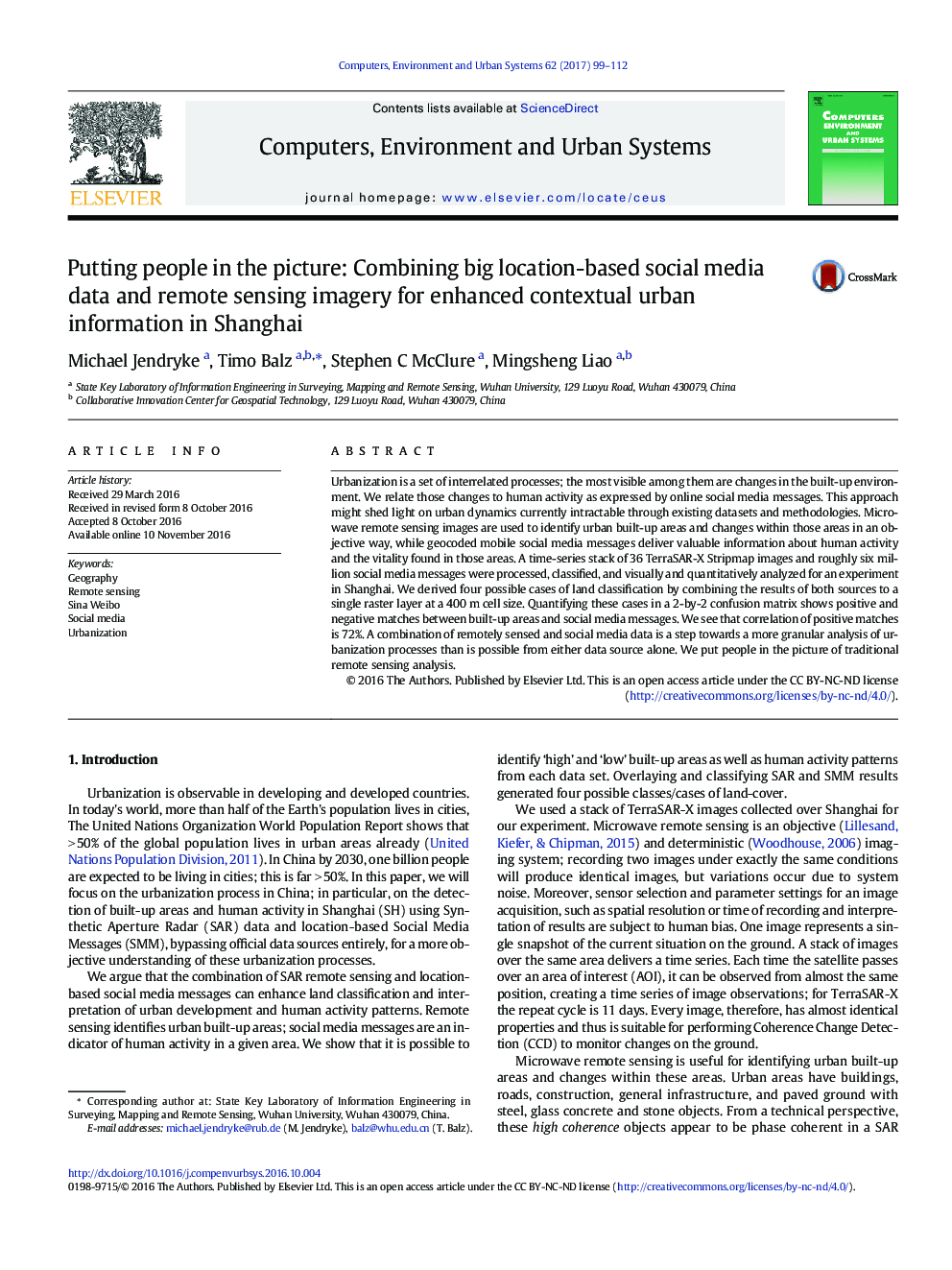| Article ID | Journal | Published Year | Pages | File Type |
|---|---|---|---|---|
| 4965219 | Computers, Environment and Urban Systems | 2017 | 14 Pages |
â¢Detection of variations between built-up and human activity in Shanghai is proposed.â¢Microwave remote sensing imagery (coherence) has been used to detect built-up areas.â¢Localized social media messages from Sina Weibo indicate areas of human activity.â¢The result: enhanced urban information in four cases at 400 m resolution.â¢Official data sources (not available) are bypassed.
Urbanization is a set of interrelated processes; the most visible among them are changes in the built-up environment. We relate those changes to human activity as expressed by online social media messages. This approach might shed light on urban dynamics currently intractable through existing datasets and methodologies. Microwave remote sensing images are used to identify urban built-up areas and changes within those areas in an objective way, while geocoded mobile social media messages deliver valuable information about human activity and the vitality found in those areas. A time-series stack of 36 TerraSAR-X Stripmap images and roughly six million social media messages were processed, classified, and visually and quantitatively analyzed for an experiment in Shanghai. We derived four possible cases of land classification by combining the results of both sources to a single raster layer at a 400Â m cell size. Quantifying these cases in a 2-by-2 confusion matrix shows positive and negative matches between built-up areas and social media messages. We see that correlation of positive matches is 72%. A combination of remotely sensed and social media data is a step towards a more granular analysis of urbanization processes than is possible from either data source alone. We put people in the picture of traditional remote sensing analysis.
Graphical abstractDownload high-res image (520KB)Download full-size image
